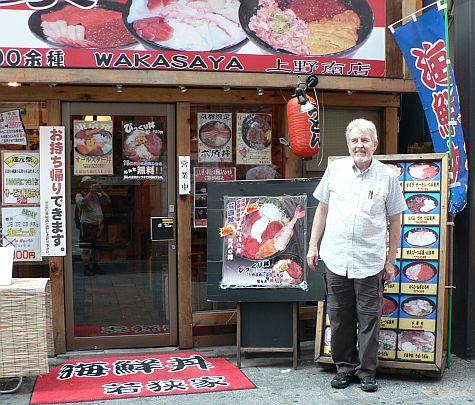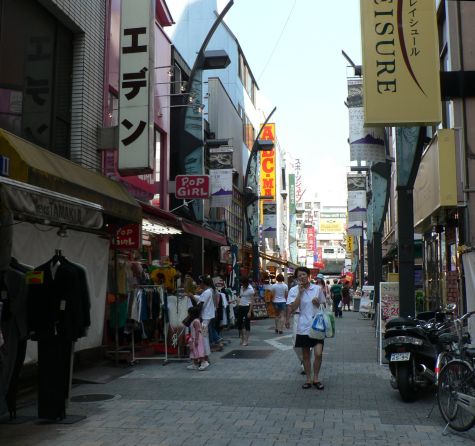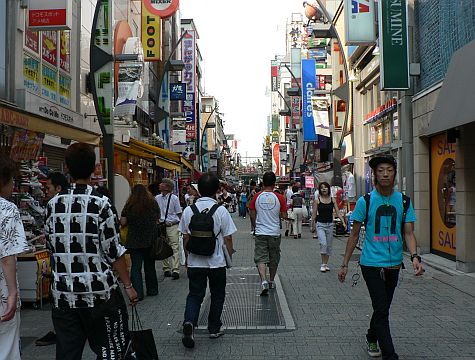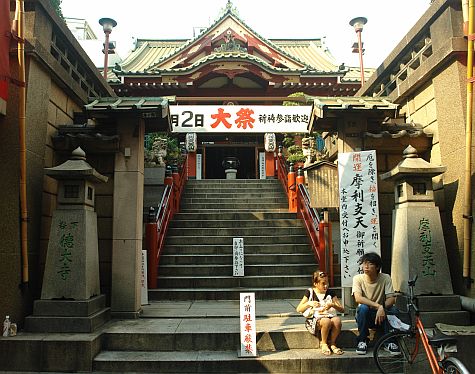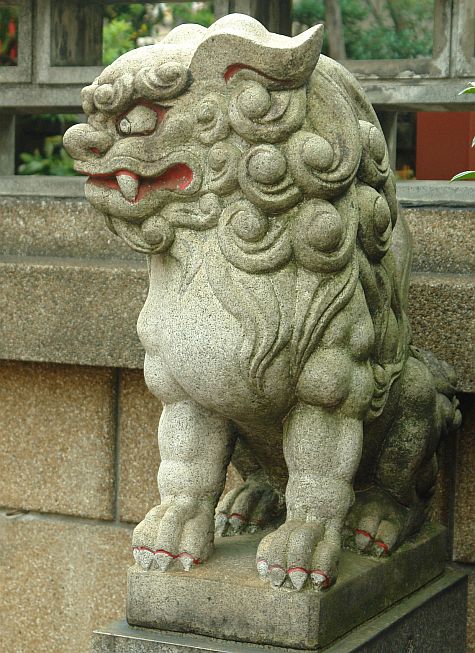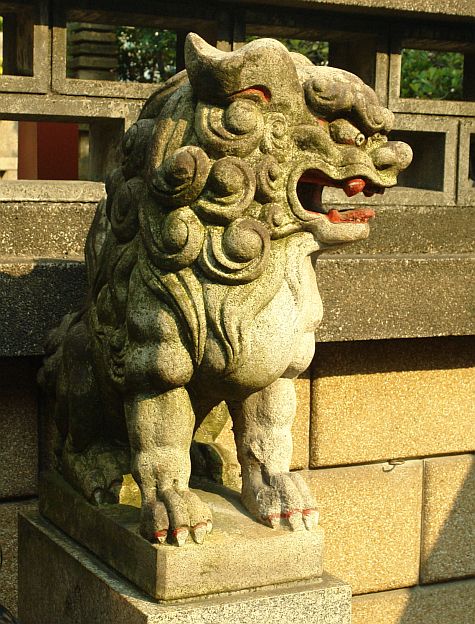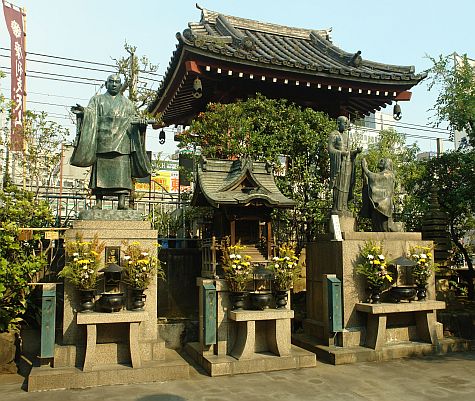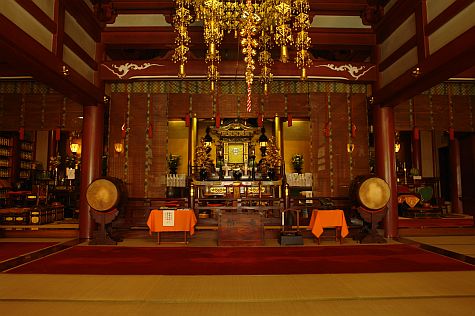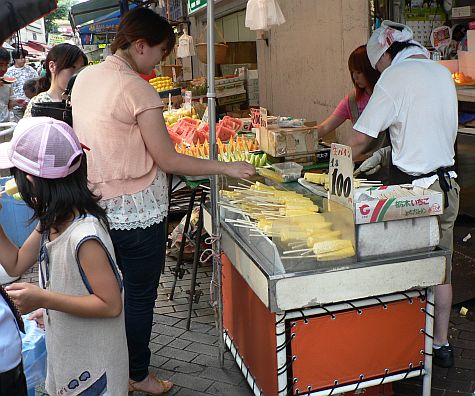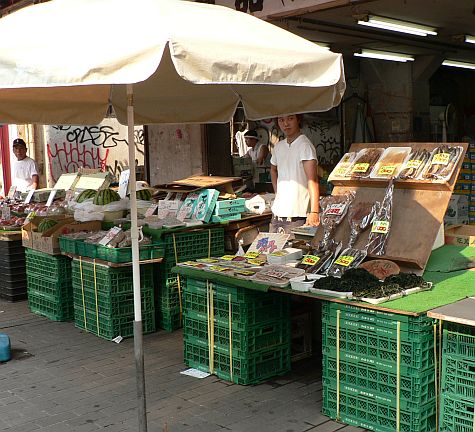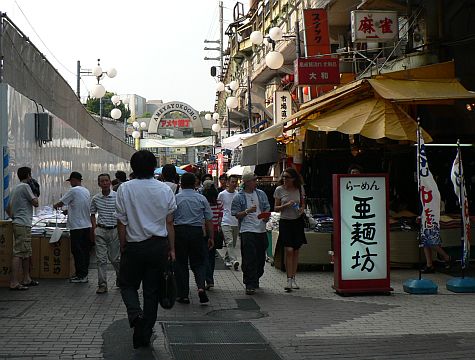We started at the south entry of the Ameyoko street market. This end seemed to have more clothing stores.
The market is a network of shopping streets, both north-south and east-west.
In the middle of the market, we found the Tokudai-ji. It seems true that it doesn’t take much to find a temple in Tokyo. Just turn around the next corner.
At the top of the stairs, the stone lion to the left had a few features painted in.
The lion to the right was also painted, exhibiting a slightly different personality.
Continuing to the right of the front entry were statues, presumably of the founders / sponsors of the temple.
This temple was similar in structure to others we’ve seen: centre altar, with smaller altars to the left and right.
Continuing on the shopping streets northward, the number of food stalls increased. Pineapple on a stick is popular, in hot weather.
The dried fish market had a good selection, but doesn’t attract a similar interest by children.
The north gate of the shopping street is marked with an arch.
Exiting the Ameyoko street, the intersection at Ueno station is prominent. It’s not a pretty area.
This area of town doesn’t offer many tourist attractions per se. It seems to be much more of a local neighbourhood, where people live — and probably board trains or subways to go to work.

